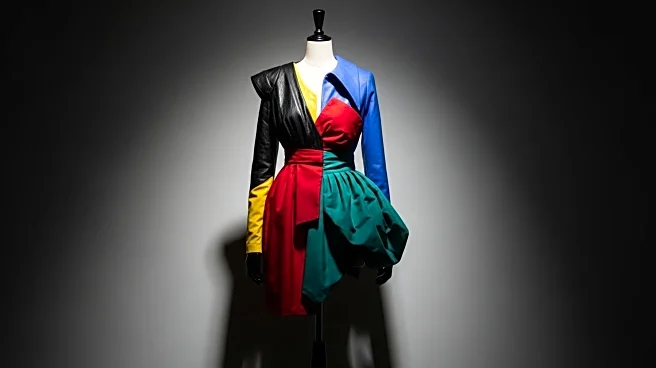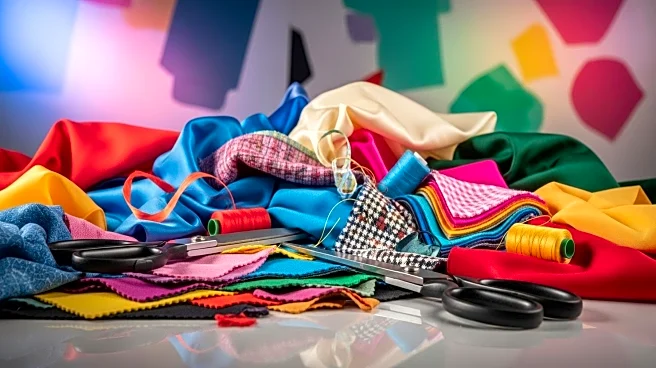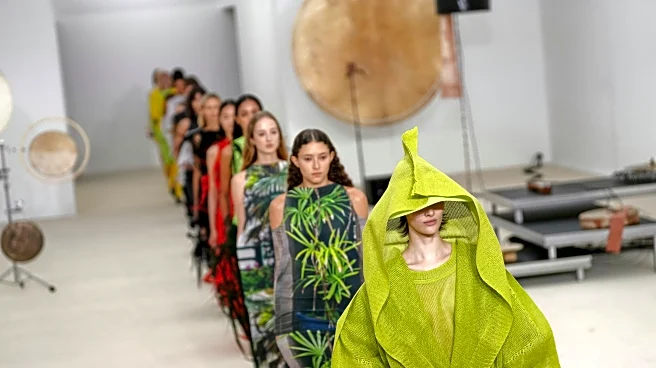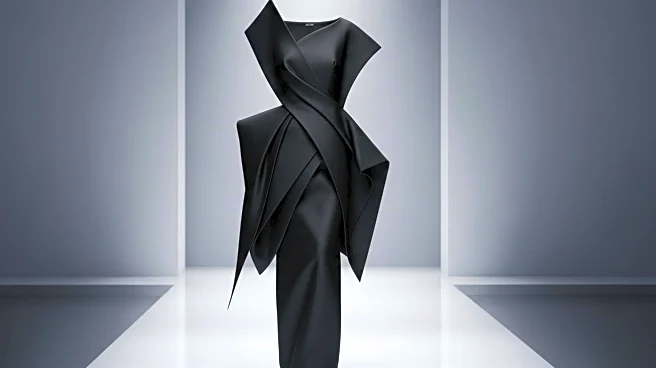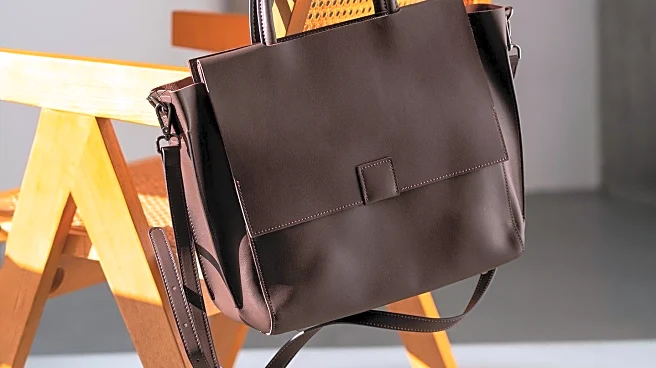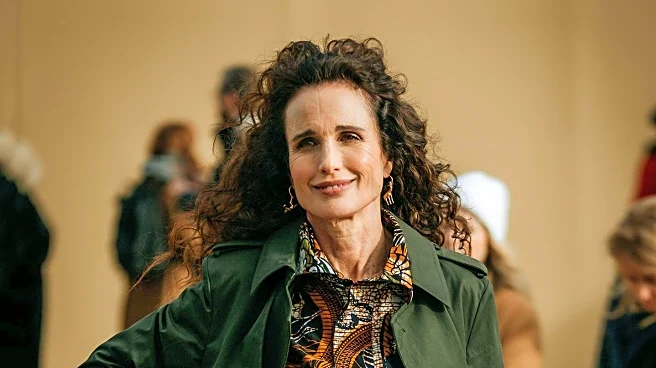What's Happening?
Jean Paul Gaultier's Spring 2026 Ready-to-Wear Collection was unveiled at Paris Fashion Week, featuring designs by Duran Lantink. Known for his unconventional approach, Lantink presented a collection that included hirsuite bodysuits and club wear, challenging traditional fashion norms. The show took place at the Musée du quai Branly, marking Lantink's first show for Gaultier. The collection paid homage to Gaultier's legacy as an 'enfant terrible' of fashion, incorporating iconic elements like the cone bra and marinière stripe with a modern twist.
Why It's Important?
The collaboration between Jean Paul Gaultier and Duran Lantink signifies a new era for the fashion house, blending Gaultier's iconic style with Lantink's avant-garde vision. This partnership highlights the evolving nature of fashion, where established brands are embracing innovative designers to stay relevant and appeal to younger audiences. The collection's bold designs challenge conventional fashion norms, potentially influencing future trends and encouraging other designers to experiment with unconventional styles.
What's Next?
Following the successful debut of the Spring 2026 collection, Duran Lantink is expected to continue pushing boundaries in fashion, potentially leading to further collaborations with established brands. The collection's reception may influence Gaultier's future creative direction, as the brand seeks to maintain its relevance in the competitive fashion industry. Additionally, the bold designs may inspire other designers to explore unconventional styles, potentially leading to a shift in fashion trends.
Beyond the Headlines
The collaboration between Gaultier and Lantink raises questions about the role of fashion in challenging societal norms and promoting self-expression. By incorporating elements of gender fluidity and unconventional designs, the collection encourages discussions about identity and empowerment through fashion. This partnership also highlights the importance of innovation in maintaining a brand's relevance, as established fashion houses seek to adapt to changing consumer preferences and cultural shifts.



